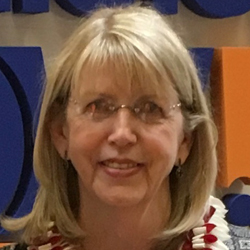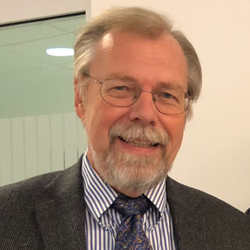Auditory Research Lab
Welcome to the SFSU-UCSF Auditory Research Lab at San Francisco State University
The work of our laboratory is to study how speech recognition in background noise depends on the frequency and timing elements of the noise in individuals with normal hearing and those with hearing loss.
Mission & Vision
Our mission is to work with individuals with normal hearing and those with hearing loss in determining which aspects of everyday noise cause the most difficulty with communication. From the knowledge, the goal is to develop therapy or training strategies to improve speech understanding in noisy environments.

Goal of the lab
Studies of the auditory system have revealed that it is designed to suppress unwanted background noise such that pertinent environmental and speech signals can be heard with as much accuracy as possible. However, speech clarity in noisy environments remains an elusive ability for most listeners. Thus, the accurate recognition of speech in noisy conditions is an important yet not fully understood task performed by the auditory system even for normal hearing listeners. Further, even mild hearing loss will create a clear deterioration of this ability. One contention is that signal-in-noise (SIN) processing depends on the type of noise that interferes with the speech recognition ability (Oxenham & Kreft, 2016; Schubotz et al., 2016). Recent studies in humans and animals demonstrate that the specific spectral and temporal composition of background noise is a key-determinant in the efficacy of SIN processing (Hochmuth et al., 2015; Oxenham and Kreft, 2016; Homma et al, 2020). In the current study our goals are two-fold: 1) to determine which temporal and spectral modulations present in the noise impede the SIN processing in normal hearing subjects and 2) to explore the influence of different spectro-temporal noise conditions in mild to moderate hearing loss.
Scientific Background
Detecting acoustic signals in background noise is an important everyday communicative task. However, the question of how that is accomplished is not fully understood. Of special significance is that speech recognition ability sharply declines in patients with even mild to moderate hearing loss (Wardenga et al., 2015). More research needs to be conducted to determine what aspects of the composition of background noises may increase or decrease the ability to understand speech in the presence of noises. Previous studies have shown that different types of noise routinely used in audiological assessments, such as pink noise, ICRA noise, multi-talker babble noise, speech noise or white noise, result in differing abilities to recognize speech depending on the character of the noise (Schubotz et al., 2016; Oxenham and Kreft, 2016). However, what is causing these differences due to the nature of each noise is not well understood. This study will examine the role of more precisely defined spectrotemporal noise compositions on speech recognition in normal and hearing-impaired listeners. This will be done by using a recently developed and validated sentence-in-noise test (Kollmeier et al., 2015) that has been adapted for many languages, including American English (Kiolbasa, 2015). A main advantage of this test is that it uses a randomized selection from a matrix of key words that create grammatically correct but unpredictable sentences (e.g., Hochmuth et al., 2012; Kollmeier et al., 2015). As a consequence, the Matrix test can be repeated many times without learning effects.

Marcia Raggio, Lab Co-Director (SFSU)
Education
1992 PhD, University of California, San Francisco
1980 M.S., San Francisco State University
1978 B.A., San Francisco State University
Research Interests
Marcia Raggio, PhD, FAAA is the co-director of the SFSU Auditory Research Lab. Her research interests involve aspects of the auditory cortical processing of complex signals with a particular interest in how the brain processes speech and noise simultaneously and which aspects of the noise create greater or lesser difficulty.

Christoph Schreiner, PhD, MD (UCSF), Lab Co-Director
Education
1977 PhD, University of Göttingen
1981 MD, University of Göttingen
1974, M.A, University of Göttingen
Research Interests
My main scientific goal over the last few decades has been to better understand the cellular properties of auditory cortical neurons in a range of species from rodents, carnivores to nonhuman primates. While we gained much knowledge of neuronal properties in responses to sounds it has become apparent that studying neurons in isolation is not sufficient to account for the processing principles that govern behavior and perception. An increasingly influential hypothesis in neuroscience posits that `cell ensembles', computational units of the brain that consist of multiple, synchronously activated neurons, are essential to consolidate and mediate complex information processing beyond the aggregate power of single cells. We have established in a series of studies the high degree of synchronization of neuron pairs in the inferior colliculus and the auditory cortex (Atencio and Schreiner, 2013; Atencio et al., 2016). In addition, we have identified the presence and basic properties of multi-neuronal ensembles in the auditory cortex (See et al., 2018) and their distinctions in sound encoding to single neurons (See et al., 2020). My goal is to explore further the structure and function of cell ensembles in the auditory forebrain, in particular regarding information extraction and transmission during basic auditory tasks, such as signal detection and discrimination. These studies are necessary to understand the principles inherent in normal hearing as well potential detriments in hearing ability if the operation of cell ensembles is disrupted, e.g., by altered input due to peripheral auditory impairments, aging, or other neuropathological influences.
Lab Assistant Students
Keleigh Alderman
Hope David
Andrew Hoffman
Lamont Lee
Priscilly Medrano
Rylie Velez
Martha Vergaray
- Beitel RE, Vollmer M, Raggio MW, Schreiner CE. Behavioral training enhances cortical temporal processing in neonatally deafened juvenile cats. J Neurophysiol. 106(2):944-59, 2011.
- Beitel RE, Snyder RL, Schreiner CE, Raggio MW, Leake PA. Electrical cochlear stimulation in the deaf cat: comparisons between psychophysical and central auditory neuronal thresholds. J Neurophysiol. 83(4):2145-62, 2000.
- Hochmuth, S., T. Brand, M. A. Zokoll, F. Z. Castro, N. Wardenga, and B. Kollmeier. A Spanish Matrix Sentence Test for Assessing Speech Reception Thresholds in Noise. International Journal of Audiology 51 (7): 536–544, 2012.
- Hochmuth, S., T. Jürgens, T. Brand, and B. Kollmeier.Talker-and Language-Specific Effects on Speech Intelligibility in Noise Assessed with Bilingual Talkers: Which Language is More Robust against Noise and Reverberation? International Journal of Audiology 54 (Suppl. 2): 23–34, 2015.
- Homma NY, Atencio CA, Schreiner CE Plasticity of Multidimensional Receptive Fields in Core Rat Auditory Cortex Directed by Sound Statistics. Neuroscience. 467:150-170, 2021.
- Homma NY, Hullett PW, Atencio CA, Schreiner CE Auditory Cortical Plasticity Dependent on Environmental Noise Statistics. Cell Report 30(13):4445-4458.e5, 2020.
- Kiolbasa, A.M. Evaluation of the American English Matrix Test with cochlear implant patients. Dissertation, Washington University School of Medicine, 2015.
- Kollmeier, B., A. Warzybok, S. Hochmuth, M. A. Zokoll, V. Uslar, T. Brand, and K. C. Wagener. The Multilingual Matrix Test: Principles, Applications, and Comparison across Languages: A Review. International Journal of Audiology 54 (Suppl. 2): 3–16, 2015.
- Oxenham A.J, Kreft H.A. Speech Masking in Normal and Impaired Hearing: Interactions Between Frequency Selectivity and Inherent Temporal Fluctuations in Noise. Adv Exp Med Biol. 894: 125–132, 2016.
- Raggio MW, Schreiner CE. Neuronal responses in cat primary auditory cortex to electrical cochlear stimulation. III. Activation patterns in short- and long-term deafness. J Neurophysiol. 82(6):3506-26, 1999.
- Raggio MW, Schreiner CE. Neuronal responses in cat primary auditory cortex to electrical cochlear stimulation: IV. Activation pattern for sinusoidal stimulation. J Neurophysiol. 89(6):3190-204, 2003.
- Schubotz, W., T. Brand, B. Kollmeier, and S. D. Ewert. 2016. Monaural Speech Intelligibility and Detection in Maskers with Varying Amounts of Spectro-Temporal Speech Features. The Journal of the Acoustical Society of America 140 (1): 524–540, 2016.
- Wardenga N, Batsoulis C, Wagener KC, Thomas Brand T, Lenarz T., Maier H, Do you hear the noise? The German matrix sentence test with a fixed noise level in subjects with normal hearing and hearing impairment. Int J Audiol. 54 Suppl 2:71-9. 2015.
Would you like to participate in our Auditory Research Lab?
We are seeking people with Normal Hearing and those with Mild-Moderate Sensorineural Hearing Loss. Reach out if you are interested in participating or would like to learn more about the work of our lab.
If you’re interested in participating in our Auditory Research Lab as a student or subject, please contact Dr. Raggio at mraggio@sfsu.edu.
Diversity and Inclusions Statement
Our lab will equally support and promote multiculturalism, inclusivity, opportunity, respect, and dignity for all of our members, patients, families.